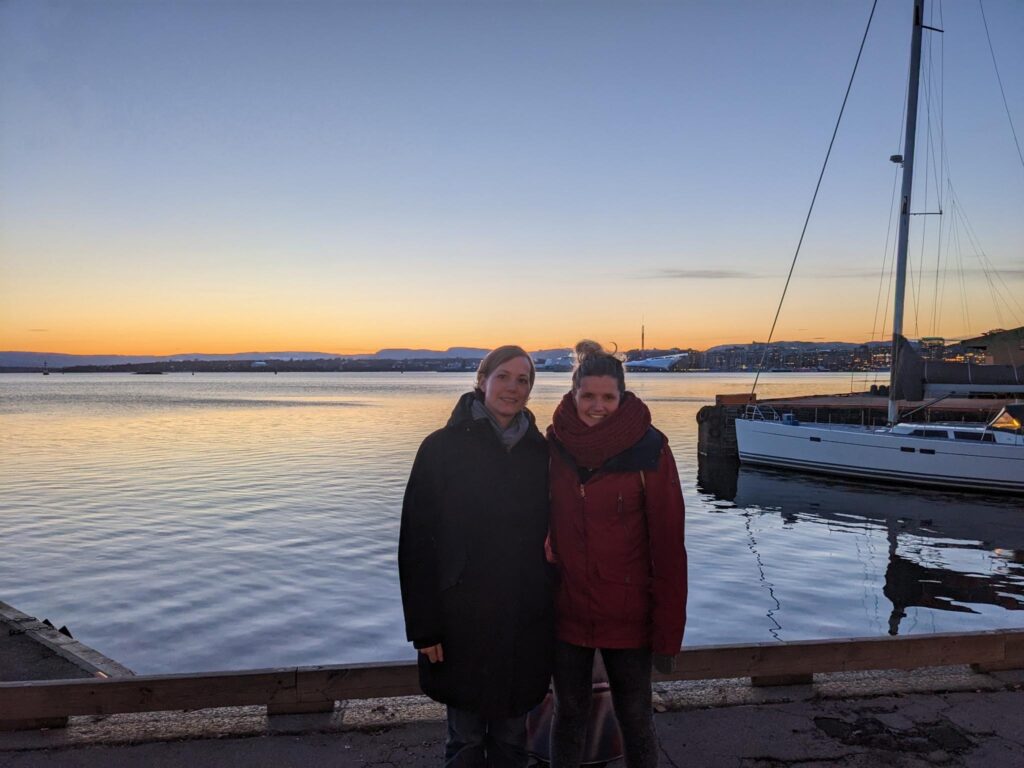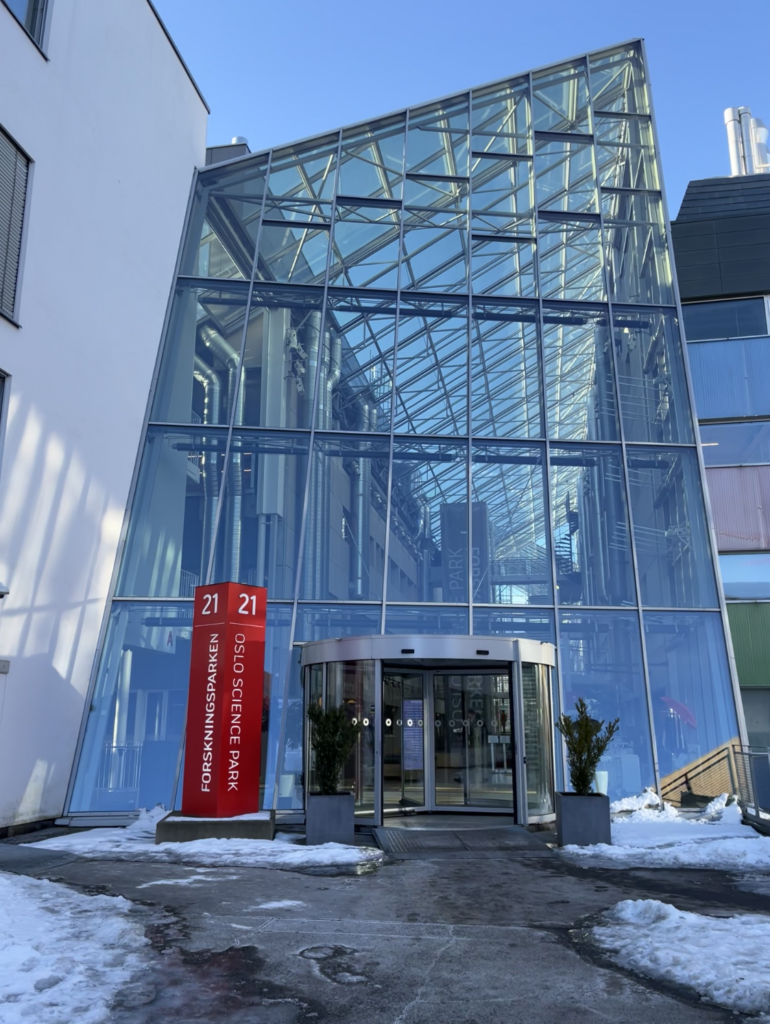Eva Maria Hille at University of Oslo
Understanding your own disease
How the use of contactless sensors in health could affect children

„I work in a Collaborative Research Centre where we develop sensors that measure health data in a completely contactless way,“ says Eva Maria Hille. As an ethicist, she is a Researcher in the Collaborative Research Centre EmpkinS at the University of Bonn in Germany. Eva was a Research Fellow at the Institute for Media and Communication at the University of Oslo in March 2023. Together with Dr. Jenny Krutzinna and Prof. Dr. Elisabeth Staksrud from the research group „Children, Youth and Media“, she investigated the question of what consequences and opportunities of the introduction of contactless sensors for children.
 „So far, we are testing the contactless sensors mainly with patients who suffer from rheumatoid arthritis or Parkinson’s disease, or are in the palliative phase. But we are also testing whether stress and depression can be measured contactless from the outside,“ Eva continues. „We’ve done a large qualitative empirical interview study in recent months, and some of the interviewees said they saw a big opportunity in treating children – precisely because children don’t like to sit still for measurements or often remove cables or electrodes in hospital.
„So far, we are testing the contactless sensors mainly with patients who suffer from rheumatoid arthritis or Parkinson’s disease, or are in the palliative phase. But we are also testing whether stress and depression can be measured contactless from the outside,“ Eva continues. „We’ve done a large qualitative empirical interview study in recent months, and some of the interviewees said they saw a big opportunity in treating children – precisely because children don’t like to sit still for measurements or often remove cables or electrodes in hospital.
This is where Jenny, Elisabeth, and Eva have brought their interdisciplinary perspectives together. The „Children, Youth and Media“ group has a lot of experience with children’s use of new technologies. Especially in the health sector, their use brings new challenges and opportunities. „When people go to the doctor, they are usually already in a suboptimal state: having an illness is already a disadvantage,“ adds Jenny.
Could these new measurements help children to better understand their own disease? Or could they help to promote children’s independence – in the sense of patient autonomy? Jenny, Elisabeth, and Eva explored these and other questions in talks, discussion groups, over lunch, and other occasions. „Inferring internal states from external movements would be an opportunity not only for children, but for people in general who have difficulties communicating or expressing internal body states,“ adds Jenny.
 Making experiences of invisibility in the health sector visible, without lapsing into hypervisibility, will be the task of those affected, but also of research, now and in the coming period. Together with Matthias Braun and Hannah Bleher (both University of Bonn), a joint paper entitled „Tackling Structural Injustices: On the Entanglement of Visibility and Justice in Emerging Technologies“ has been published in the American Journal of Bioethics (https://doi.org/10.1080/15265161.2023.2207514).
Making experiences of invisibility in the health sector visible, without lapsing into hypervisibility, will be the task of those affected, but also of research, now and in the coming period. Together with Matthias Braun and Hannah Bleher (both University of Bonn), a joint paper entitled „Tackling Structural Injustices: On the Entanglement of Visibility and Justice in Emerging Technologies“ has been published in the American Journal of Bioethics (https://doi.org/10.1080/15265161.2023.2207514).
A shared experience is the importance as well as the ethical challenges of involving children in research. Elisabeth shares her experience: „We are dealing with three different areas, all of which have substantial research ethical challenges, even without the involvement of children. However, our ethical duty to include children in research that has relevance to their lives and well-being is a reminder of the need to find ethical methods and overcome challenges. Thankfully with a cross-disciplinary approach, we can learn from each other and solve dilemmas together.”
See here how Eva arrived at the University of Oslo and her experience there.